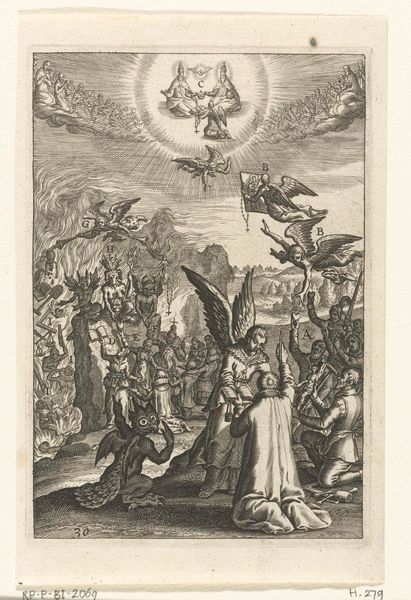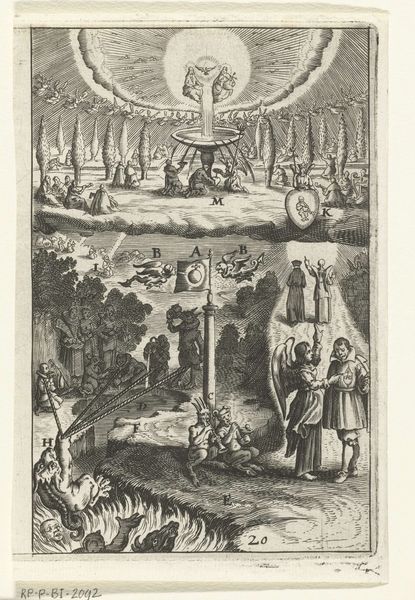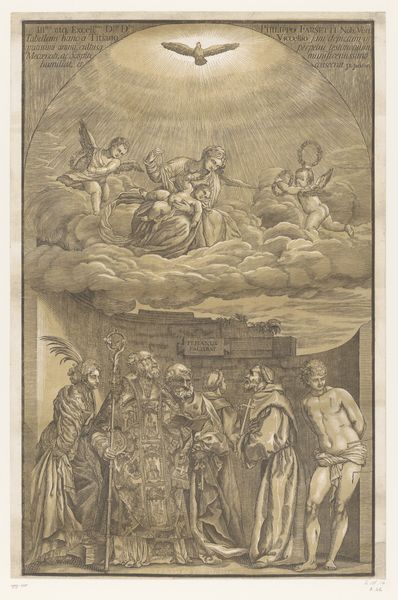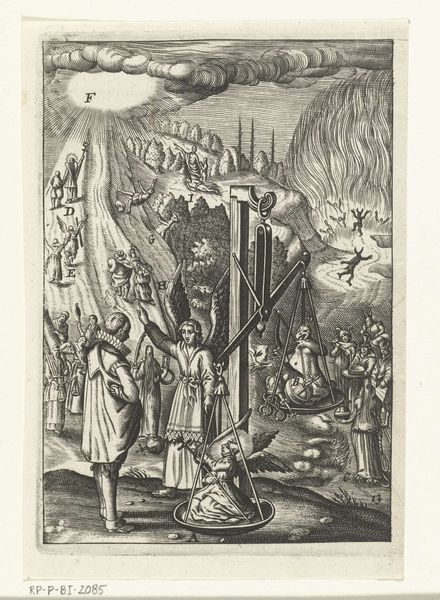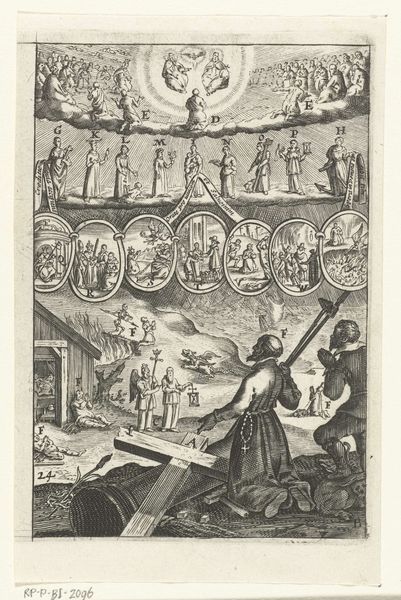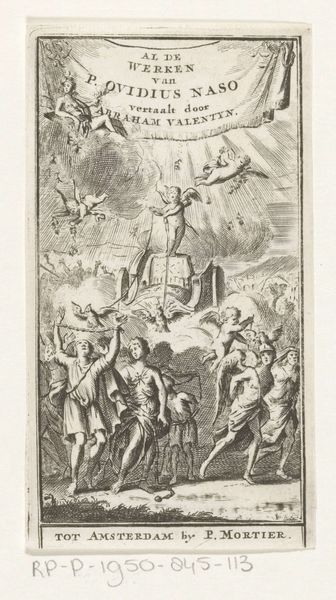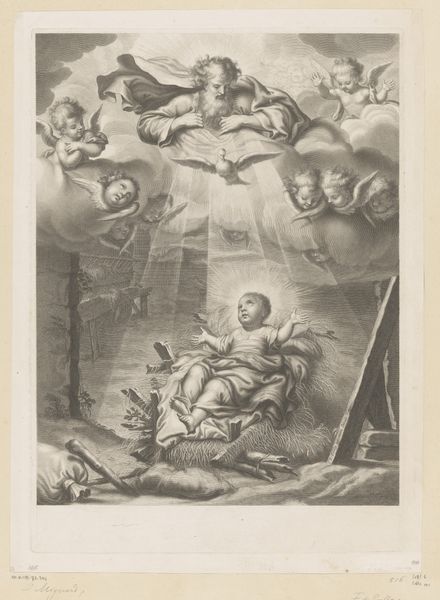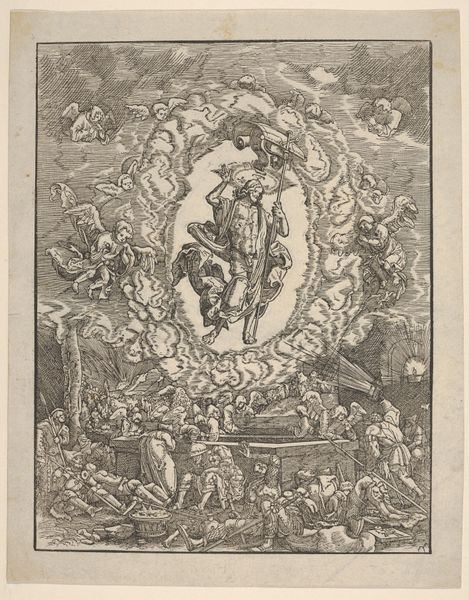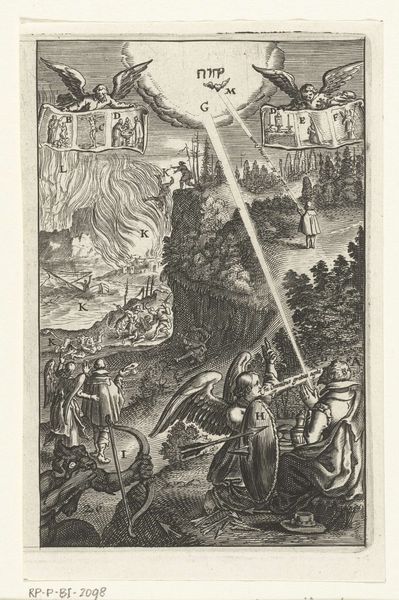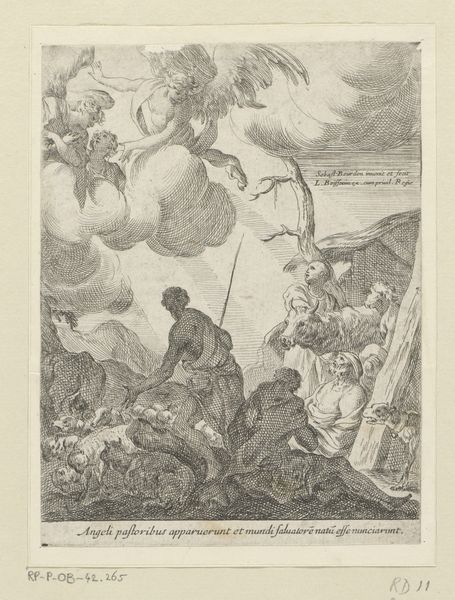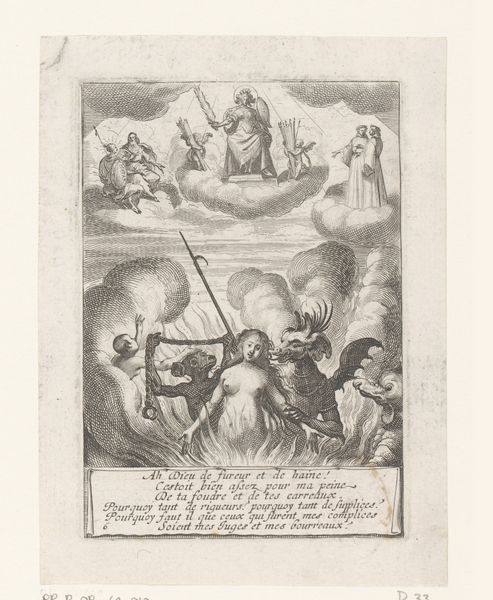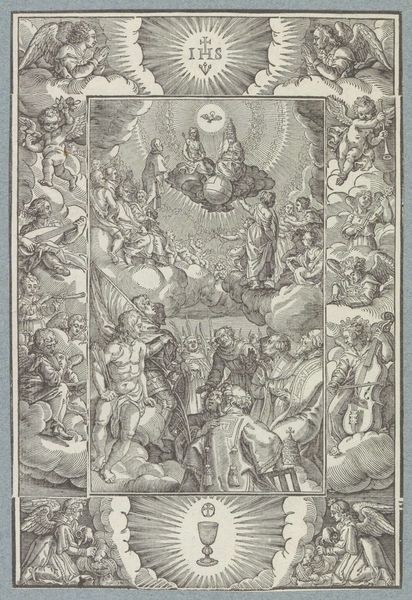
Decoratie bij het huis van de heer J. Bolten te Amsterdam, 1766 1774 - 1776
0:00
0:00
Dimensions: height 190 mm, width 120 mm
Copyright: Rijks Museum: Open Domain
Curator: Here we have "Decoration at the House of Mr. J. Bolten in Amsterdam, 1766" created between 1774 and 1776 by Noach van der Meer the Younger. It’s an engraving, currently held in the Rijksmuseum. Editor: It’s a dense image, isn't it? Very classical in its style, yet it feels celebratory, almost propagandistic, with all these figures and symbols vying for attention. Curator: Precisely. Van der Meer made this print well after 1766, to commemorate decorations made for the house of a Mr. Bolten in that year. It reflects the baroque aesthetics popular at the time, an era of grand displays of wealth and power. Note the use of allegory, a common device in 18th century art to convey complex ideas. Editor: Absolutely. And I am immediately drawn to the pyramid at the top, the all-seeing eye within. It is placed prominently, radiating light over the whole scene. It is very loaded symbolically – invoking reason, divine providence, maybe even civic virtue, overseeing Mr. Bolten’s domain. Curator: Interesting take! My feeling is that the radiant triangle represents divine authority blessing commercial prosperity and social order. The scene below looks very much like the allegory of justice. Mr. Bolten may have wanted to subtly link his success with righteous judgment and providential guidance. Editor: I see it. Also notice how that central female figure, seated on the lion-supported throne, hands something to the figure kneeling before her. It's like an official decree or a token of recognition being passed on to Mr. Bolten himself? He is being granted prosperity, symbolized through classicized motifs and historical painting style. Curator: This all echoes back to Amsterdam’s Golden Age, when the city saw itself as a new Rome, destined for greatness. Commemorative images like these reinforced that national myth-making. I find myself wondering what impact a print such as this had on contemporary viewers. Editor: It offered, and still offers today, a rich tapestry of symbols to be interpreted. Exploring cultural memory woven into such an artwork provides insight into our contemporary perspectives. Curator: It prompts reflection on the socio-political landscape of 18th-century Amsterdam and the desire to express power and social status through these rather baroque allegories. Editor: Indeed, making this print much more than just a decorative image. It is a snapshot of societal values and the human need for legacy building.
Comments
No comments
Be the first to comment and join the conversation on the ultimate creative platform.
